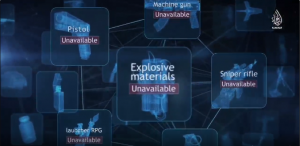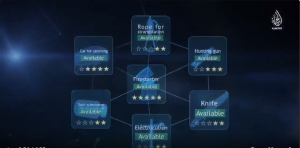By Sammie Wicks
Islamic State (IS) and other violent extremist organisations continue to proliferate on online platforms despite efforts from major online platforms to combat the spread of online terrorist material. The exploitation of social media is particularly concerning due to a reported surge in Facebook usage and usage across other communication platforms. While not all of this increased usage (or even most of it) can be attributed to online extremist activity, it does mean that people are spending more time online and could potentially increase their chances of interacting with terrorist propaganda.
Incite the Believers
On 26 July 2020, IS’s Al Hayat Media Center released a new video calling for terrorist attacks in the United States. The video was posted in both Arabic and English and disseminated on RocketChat, Hoop, and Telegram. The content advocates for low-technology terrorist attacks after highlighting offenses committed against Muslims in Muslim-majority countries. It acknowledges that it is difficult for some of its followers to come to theatres of jihad and recognises that explosives and firearms may be hard to obtain. The propaganda video suggests arson and specifically encourages targeting agriculture as well as forested areas for a number of reasons: it is easy to carry out while also avoiding detection and it is economically damaging.
IS has previously called for its followers to engage in low-technology attacks. This video situates itself in the context of many western governments struggling to combat COVID-19 and the economic fallout from lockdown measures. As the video states, arson and wildfires are resource-intensive, drawing costly countermeasures from first responders, costing lives, drawing enormous private company payouts, and sometimes destroying communities. The FBI reported that in 2017 the average cost from an arson incident was $15,573 in losses.
Gamification
The video is a clear call to action. It provides details on how to carry out an attack, guidance on target selection, and details on avoiding arrest. The video is very similar to a mission briefing that one would receive in popular culture modules such as films (mission impossible/your mission should you choose to accept) or within a mission-oriented first-person shooter video game. Terrorism researchers continue to explore the incorporation of game design elements within non-game contexts (gamification), and this video utilises several of these motifs. The themes and design elements, such as the frame in the Incite the Believers video where the watcher (player) is presented with a weapon selection screen, display IS’s inclination towards this gamification strategy.
In the first frame, the video displays weapons that are not easily accessible as “unavailable” but in the following frame, weapons of a lower tech quality are listed as “available”. The screen transitions to a display of these lower tech options with their corresponding star ratings. For example, the fire starter is presented as the highest-ranked item.

Screen capture from “Incite the Believers”
This Al Hayat Media Center release is yet another example of IS propaganda linking gamification motifs with real-world violence.

Screen capture from “Incite the Believers”
The video also uses several other devices: video game graphics are mixed with real footage of devastation from fires. The mixture of gamified violence along real images and videos seeks to desensitise the viewer. It also blurs the lines between in-game violence and violence in real life. Examples of gamification continue in the video, with a portion of the video showing a rise in casualties reminiscent of an in-game scoreboard.
In intentionally exploiting the gaming culture to incite violence in real life, the video seemingly targets a population that finds familiarity in the medium and may be vulnerable to the message. This video and others like it exist within a broader ecosystem that includes jihadi video games and the sharing of terrorist content within online gaming message boards. This diverse use of gaming not only creates a continuity of the medium- it also intermingles instructional messaging with different aspects of jihadi culture: anasheed, ideological arguments, language, imagery, iconography and branding.
Even if the video fails to inspire arson, naturally occurring wildfires and unsolved arson incidents provide the group with an opportunity to take credit for fires that it and its followers did not start. Although some of IS’s claims of responsibility may appear dubious, such as the group’s claim after the Las Vegas shooting, they still have the intended effect of sowing fear in the populous.
Ultimately, IS remains adept in the online sphere. The dissemination of this video and others across various platforms continue to present both a challenge and opportunity to social networking platforms, tech giants, government, and civil society organisations.
No comments:
Post a Comment